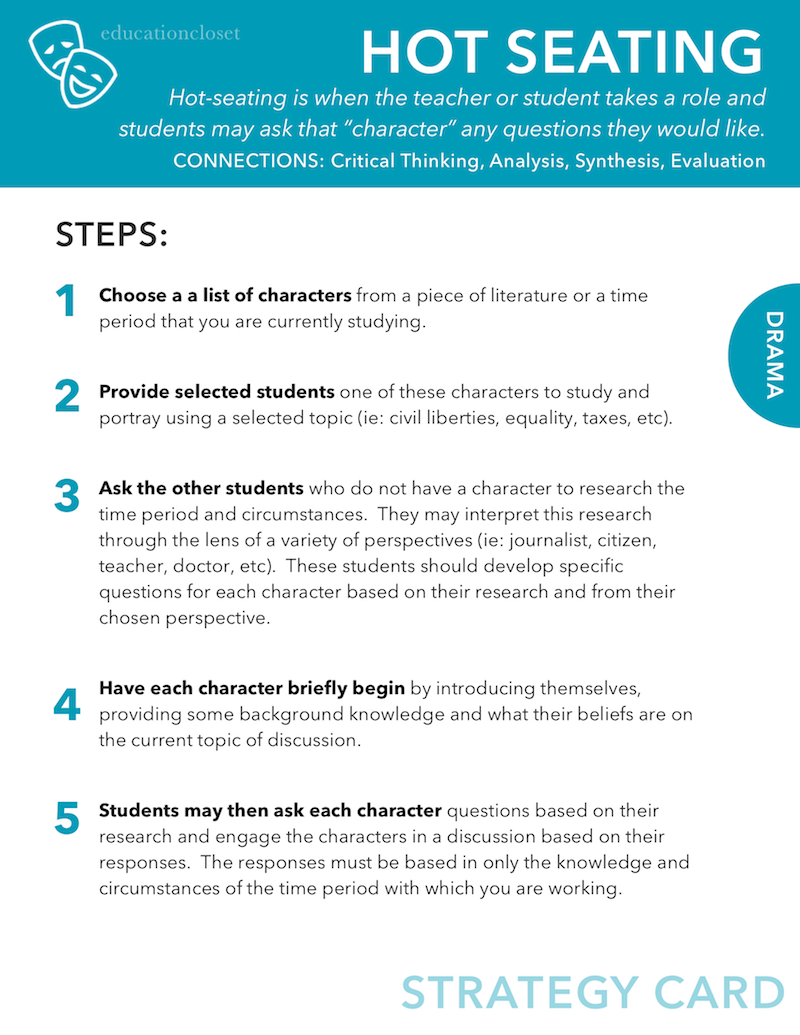One of my favorite arts to start with in Arts Integration is drama. This is mostly because this is the area where most teachers feel comfortable starting. Even reluctant teachers seem to be willing to try using drama in their classroom when we have an Arts Integration discussion. I think this is because teachers are natural actors anyway. When we stand in front of a classroom, we need to “perform” as authentically as possible so as to engage and inspire our students.
We naturally know how to use our voice to capture attention, we understand that our body language can convey more than our words sometimes, and we need to be quick-thinkers and improvise every one in a while. Plus, many teachers already use readers theater, and so when you ask them to include drama, it’s not so far from the tools they currently employ. However, there are some specific drama strategies that you may not be aware of that can have a tremendous impact in your classroom and we’re going to explore those this week.
Hot-Seating
Today’s strategy is called “Hot-Seating” and it is one that is very popular with students and teachers alike. Hot-seating requires deep understanding of a subject, and the ability to improvise while at the same time remaining within character. Essentially, hot-seating is when the teacher or student takes a role and students may ask that “character” any questions they would like. The person within the character must know many details about that character, the time period, societal background and economic drivers in order to accurately portray that character. And the students asking the questions must think of questions that would be appropriate to those circumstance as well. You wouldn’t ask Ben Franklin about the Civil Rights movement, after all. But you COULD ask Ben Franklin on the rights and liberties of slaves during his time.
Here are the Steps:
1. Choose a a list of characters from a piece of literature or a time period that you are currently studying.
2. Provide selected students one of these characters to study and portray using a selected topic (ie: civil liberties, equality, taxes, etc).
3. Ask the other students who do not have a character to research the time period and circumstances. They may interpret this research through the lens of a variety of perspectives (ie: journalist, citizen, teacher, doctor, etc). These students should develop specific questions for each character based on their research and from their chosen perspective.
4. Have each character briefly begin by introducing themselves, providing some background knowledge and what their beliefs are on the current topic of discussion.
5. Students may then ask each character questions based on their research and engage the characters in a discussion based on their responses. The responses must be based in only the knowledge and circumstances of the time period with which you are working.

DOWNLOAD THIS CARD HERE
Obviously, this can make connections to many different contents, but most specifically social studies and the research element of Common Core reading and writing. Students must be able to read rigorous non-fiction texts, look for multiple sources, and develop arguments based on their research. You could also weave math and science fairly seamlessly into this if looking at the economics or scientific advancements of the time period you selected.



